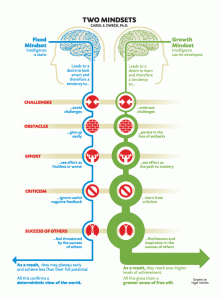Recently a faculty member was overhead making the comment that syllabi are just chapter headings arranged by week. The Innovative Instructor hopes that the syllabus for your course meets a higher standard. This post provides guidance and resources towards that end.

Syllabus “The Fiftes” with permission from Dr. Tona Hangen, Worcester State University, Massachusetts
Richard Shingles, a lecturer in Johns Hopkins Department of Biology who also directs the Center for Educational Resources TA Training Institute, offers graduate students in his workshops a number of suggestions for preparing a syllabus. He suggests first looking at examples to get an idea of what to include. Other faculty in your department might share their syllabi, but there other resources awaiting your perusal.
There have been several attempts to build a database of university and college level syllabi, including one by Dan Cohen, the director of the Digital Public Library of America, which unfortunately is no longer functioning. Just recently the Open Syllabus Project was announced. This initiative includes partners from Columbia, UNC, Harvard, Parsons, The New School, and has Dan Cohen on its advisory board. Its goal is “…to promote institutional cooperation in the task of gathering and analyzing a significant corpus of syllabi.”
A new online, peer-reviewed journal, called Syllabus is devoted entirely to the display of examples from a wide range of disciplines. At the other end there is always Google. Try searching on “syllabus your discipline” (e.g., syllabus art history) to get started.
A syllabus should be more than a list of class topics and readings. In her book Tools for Teaching (Jossey-Bass, 1993, p. 14), Barbara Goss Davis tells us, “A detailed course syllabus… gives students an immediate sense of what the course will cover, what work is expected of them, and how their performance will be evaluated. …Further by distributing a written explanation of course procedures, you can minimize misunderstandings about the due dates of assignments, grading criteria, and policies on missed tests.”
Dr. Shingles recommends trying to anticipate and answer student questions with information provided in the syllabus, and keeping the schedule flexible when possible by giving topics for the week versus the day. As for what should be included in your syllabus, think in terms of more rather than less. Here is his list:
- Provide basic information
- Describe course prerequisites
- Give an overview of the course’s purpose
- State general learning goals or objectives
- Describe the course format
- Specify textbook and readings
- List supplementary materials for course
- List assignments/papers/exams
- Describe grading and evaluation
- Stipulate course policies
- Provide a list of university support offices
- Provide a course calendar
- List important dates (add/drop, grade appeals)
- Indicate supplementary study aids
For the instructor use of the syllabus doesn’t end with distributing it to your students on the first day of class. Keep a copy handy and annotate it as the semester progresses. Perhaps you find you need to spend more time on a particular topic, or that the first assignment might work better if it came a week later. It’s also good to have a copy on hand to remind students that yes, you did state that you have a no make-up policy for quizzes. You should post the syllabus online as well. Posting online could be to your Blackboard (or other LMS) course site. But Dr. Tona Hangen, a professor of history at Worcester State University in Massachusetts, has raised the bar to a higher level by sharing her syllabi via an application called flipsnack.
Flipsnack allows you to publish material online in an application that simulates page-turning. You can create a basic account for free. Another similar online application is ISSUU. ISSUU also is free for a basic account. As a side note, ISSUU has been used by at JHU for the Scholar’s Bookshelf project: http://issuu.com/scholarsbookshelf – collaboration between the Sheridan Libraries Rare Books Collection and the Department of German and Romance Languages and Literatures.
Dr. Hangen inspires with her beautifully designed syllabi. She has an archive of examples from the past several years. While the ones on flipsnack may seem daunting to the design challenged, some of her PDF versions are more easily emulated. These could be created in Word or a basic design program such as Microsoft’s Publisher, which is often included in the Microsoft Office suite.
Barbara Goss Davis reminds us: “…a well prepared course syllabus shows students that you take your teaching seriously. (Tools for Teaching, p. 14).
Macie Hall, Senior Instructional Designer
Center for Educational Resources
Image Source:
http://www.flickr.com/photos/intenteffect/4263014185/sizes/n/in/photostream/ IntentEffect
http://www.flipsnack.com/A9C8DBBA9F7/f7u8vaql Dr. Tona Hangen, Worcester State University, Massachusetts












